Analysis of Toxic Trace Metals in Pet Foods Using Cryogenic Grinding and Quantitation by ICP-MS, Part II
Dog and cat foods are examined for toxic metal content and the results are compared to WHO and EPA values.
This article is the second part of a study that examines pet foods from a variety of sources to determine if there were potentially toxic elements present in the foods and also whether more expensive foods with higher quality ingredients equated to lower levels of toxic elements. A range of "budget" to "premium" grade pet foods samples were donated by pet owners or purchased in several different stores. The food samples were ground in a cryogenic freezer mill (dry samples) or blender (wet samples) digested with concentrated nitric acid, and analyzed for trace-metals content by inductively couples plasma-mass spectrometry (ICP-MS). Results were then compared to Environmental Protection Agency Reference Dose (RFD) values and World Health Organization Tolerable Daily Intake (TDI) values, which are considered the daily oral exposure limits for the human population. Human limits were scaled to the weight of a 50-lb dog or 10-lb cat to gain perspective of an animal's potential exposure. Many of the pet foods sampled showed significant concentrations of various toxic metals. In many cases, the concentrations exceeded the extrapolated human limit values calculated to pet-size dosages.
Part I of this article (1) focused on the raw materials that are used in the pet food manufacturing processes, all the potential sources of contamination, and, in particular, how the FDA regulates the pet food industry for trace-metal contamination. It also discussed the analytical methodology used to determine the trace-element content of the pet food samples, including the sample preparation steps and the optimum inductively coupled plasma–mass spectrometry (ICP-MS) instrumental conditions for the analysis.
Part II of the article carries on from Part I and will discuss how the data relate to the dietary exposure of toxic metals in those pet foods when calculated for the daily intake of an average size dog and cat. To get a better understanding of the impact to the health of the pets, the daily intake of toxic metals are then compared to EPA and WHO human risk assessment guidelines. Finally, conclusions will be drawn based on the comparison to these guidelines and in particular how they relate to the cost of the individual pet foods.
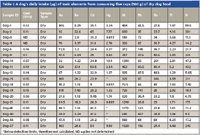
Table I: A dogs daily intake (μg) of toxic elements from consuming five cups (500 g) of dry dog food
Dietary Exposure of Toxic Metals in Pet Food
To understand what these toxic metal data mean in terms of impact on the health of an animal, they have to be related to the daily intake of food. For this study some generalities were made regarding the average size of a dog or cat and the amount the animal is fed in a day.
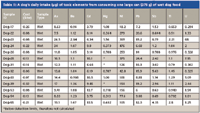
Table II: A dogs daily intake (μg) of toxic elements from consuming one large can (375 g) of wet dog food
It was concluded that a medium to large size dog with a body weight of approximately 50 lb would typically be fed as much as 5 cups of dry dog food or one large can of wet dog food (or both) per day. An average-sized cat weighing approximately 10 lb typically could be fed as much as 1 cup of dry cat food or one small can or pouch of wet food (or both) per day.
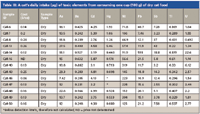
Table III: A cats daily intake (μg) of toxic elements from consuming one cup (100 g) of dry cat food
A cup of dry dog or cat food averaged about 100 g, whereas a large can of dog food typically weighed 375 g and an average-sized can of cat food weighed 175 g. From these standardized measurements, the element concentrations were calculated for each food serving. The three human protein servings (tuna, sardines, and chicken) were calculated for an average 100-g can.

Table IV: A cats daily intake (μg) of toxic elements from consuming one small can or pouch (175 g) of wet cat food
For this exercise, we will focus on a smaller group of toxic elements including As, Be, Cd, Hg, Pb, Sb, Tl, and U, which are known to exhibit severe toxicity effects on the human population. Nickel was included with the toxic elements not because of acute toxicity but due to the large concentrations found in the various types of pet food, which over time could possibly become a health hazard. Tables I–V show the calculated concentrations of elemental exposure per serving for each type of food.
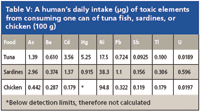
Table V: A humans daily intake (μg) of toxic elements from consuming one can of tuna fish, sardines, or chicken (100 g)
EPA and WHO Risk Assessment Values
There are no guidelines set down by the FDA for trace-element contaminants in pet food. For this study, therefore, the toxicity concentrations of these heavy metals were compared with established human risk assessment benchmarks. Two commonly used guidelines regarding dietary exposure are the Environmental Protection Agency (EPA) oral reference dosage (RfD) values (1) and the World Health Organization (WHO) PTDI or PTWI (Provisional Tolerable Daily Intake or Tolerable Weekly Intake) or TDI and TWI (Tolerable Daily or Weekly Intake) values (2). EPA RfD is defined as an estimate of a daily oral exposure of a substance to the human population that is likely to be without an appreciable risk of deleterious effects during a person's lifetime. These values are expressed as milligram per kilogram body weight per day of exposure (mg/kg/day). RfD values are applicable to any toxic substance, but are commonly applied to drinking water standards. WHO PTDI and PTWI (TDI and TWI) values are an estimate of the amount of a substance in food or drinking water that can be taken on a daily or weekly basis over a person's lifetime, with no observed adverse effects (NOAE), and are expressed as milligram per kilogram body weight per day of exposure. PTDI and PTDIs typically are used for substances that do not have a reason to be found in food (for example, heavy metals), as opposed to substances such as food additives or pesticide residues, which are known to be present.
Both EPA RfD and WHO TDI and WDI values are calculated on the basis of laboratory toxicity data to which uncertainty factors (UF) are applied. These uncertainty factors are used to compensate for a deficiency in knowledge concerning the accuracy of test results and the difficulty in estimating the health effects in a different species or in different exposure conditions. As such, the value of the uncertainty factor can be as much as an order of magnitude, but it will ultimately depend on the nature of the toxic effect, the size and type of population to be protected, and the quality of the toxicological information. The value for each toxic substance or element is calculated by dividing the No Observed Adverse Effect Level (NOAEL) by the uncertainty factor.
The uncertainty in this study is relating the level of trace metals found in pet food to the EPA RfD and WHO TDI values, which have been determined for humans. However, it is recognized that animal studies are used to generate human health risk assessment data. So although it's not an ideal scenario, the comparison is a valid assessment as long as the RfD and TDI values are adjusted for the body weight of the animals under investigation.
The limits of various compounds and elements are constantly under review. The values in Table VI were collected from EPA and WHO documentation and may have undergone revision or change. As of March 2010, values for arsenic have been withdrawn by WHO and are under revision. The documentation by WHO suggests that the levels may be lowered in future revisions. The same scenario is true of mercury, whose limits are constantly being reviewed, withdrawn, and changed. There are several publications listing limits from as low as 3 μg/kg/week (0.4 μg /kg/day) to 2 μg/kg/day depending on the type of mercury compound (that is, organic or inorganic mercury compounds).

Table VI: EPA RfD and WHO TDI values expressed as μg/kg/day and μg/day for a dog weighing 50 lb
Comparing Results with EPA and WHO Guidelines
A comparison of daily RfD and TDI values with all the different kinds of pet foods and cans of tuna fish, sardines, and chicken made for human consumption can show the potential for toxic elemental exposure to pets. The pet food samples calculated to serving size were compared with the RfD and WHO limits. In each of the pet foods, concentrations of many of target elements were found to exceeded the RfD or TDI calculated for that animal. Figures 1–5 show bar graph plots of the heavy metal data shown in Tables I–V that met or exceeded the calculated dosage limits. In all plots, the x-axis represents the sample identification of the pet foods, and the y-axis is the concentration in micrograms of the heavy element found in that serving.
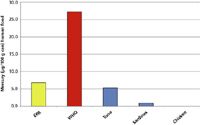
Figure 1: Concentrations in micrograms of mercury in one can (100 g) of human food (from Table V), compared to EPA RfD and WHO TDI daily intake values for a 150-lb human adult.
The first samples to be examined were the human food samples, which are shown in Figure 1. Mercury was the only element to approach an EPA or WHO limit when calculated to the serving size for one can (100 g) eaten by a 150-lb adult. The tuna serving contained 5.25 μg of mercury. The EPA RfD is 6.9 μg and the WHO limit is 27 μg.

Figure 2: Concentrations (in micrograms) of toxic metals in 5 cups (500 g) of dry dog food (from Table I), compared to EPA RfD and WHO TDI daily intake values for a 50-lb dog. (a) As, (b) Be, (c) Cd, (d) Hg, (e) Ni, (f) Pb, (g) Sb, (h) Tl, (i) U.
The highest concentrations of toxic elemental contamination were found in the dry dog foods. The comparison of a typical serving size (5 cups) for a 50-lb dog to the EPA and WHO standards in Figure 2 shows that many of these toxic compounds exceed the allowable limits. Arsenic, for example, exceeds the EPA limits for all the dry dog food samples tested, and, when using the WHO standard, only two dry dog foods were below the WHO arsenic limit. Other toxic element concentrations such as cadmium, nickel, lead, and thallium showed similar concentrations that overall exceeded EPA or WHO limits (or both). Two dog food samples had cadmium concentrations lower than the EPA and WHO limits (Dog-18 and Dog-20). All the rest of the dry foods exceeded the cadmium limit. Mercury limits in four dry dog food samples were undetectable but eight other dog food samples approached or exceeded either the EPA or WHO standards. Nickel, while not an acutely toxic element, was found at harmful concentrations according to the documented limits in all but one dry dog food sample (Dog-18). The highest level of nickel found in the dry dog food was almost six times the EPA limit and 10 times the WHO limit. Lead and thallium concentrations in the majority of the dog food samples, likewise, exceeded either the EPA or the WHO limits. Antimony concentrations for the samples were almost all below the WHO limits but exceeded the EPA limits. Uranium was found in excess of the WHO limit for all but one sample and exceeded EPA limits in eight out of 18 samples. The highest level of uranium in 5 cups of Dog-11 was 60 times the limit set by the WHO and 13 times the limit set by the EPA. Beryllium was the only element displayed in the dry food figures that did not exceed the EPA limit. However, four of the foods had levels equal to half the daily intake limit. Studies of beryllium toxicity cited by the EPA (3), in their determination of the RfD values, used dogs to establish the toxicity levels. That study found that concentrations of beryllium less than the toxic dosage resulted in long-term gastrointestinal problems in the dogs that were used in the study.
Lower concentrations of toxic metals were found in the wet dog food in comparison with the dry dog food, as shown in Figure 3. Similar to the dry dog foods, the arsenic level in all the samples exceeded the EPA RfD but were below the WHO TDI. Concentrations of beryllium, cadmium, lead, antimony, mercury, and uranium were within the EPA and WHO limits. The majority of the nickel and thallium concentrations in the wet food also stayed within the EPA and WHO limits with some exceptions.
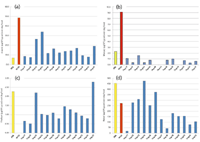
Figure 3: Concentrations (in micrograms) of toxic metals in 1 can (375 g) of wet dog food (from Table II) compared to EPA RfD and WHO TDI daily intake values for a 50-lb dog. (a) As, (b) Hg, (c) Tl, (d) Ni.
The concentrations of elements in the dry cat food shown in Figure 4 were overall less than the concentrations found in the dry dog food. Eight toxic elements studied exceeded the calculated EPA or WHO limits: arsenic, antimony, cadmium, lead, mercury, nickel, thallium, and uranium. As was noted in the previous dog food samples, arsenic levels in the samples exceeded the calculated limits. In this case however, the cat food sample arsenic concentrations exceeded both the EPA and WHO values for almost all the samples. Antimony concentrations in the dry cat food all exceeded the EPA limits but generally were below the WHO guidelines with the exception of two samples that contained greater than 30 μg of Sb in the dry cat food serving. The EPA and WHO limits for cadmium for a 10-lb cat eating 1 cup of dry food is about 4.5 μg. Eight of the dry cat food samples contained more than 4 μg of Cd in the serving. Lead levels in the dry cat foods were below the calculated limits for all but one dry cat food sample. Cat-14 contained almost 600 μg of Pb in the serving, which is more than 30 times the WHO limit. Mercury amounts were higher than the EPA limit for seven of the 13 samples and higher than the WHO limit in two samples. Nickel concentrations met or exceeded the WHO limit in every sample but were under the EPA limit for four dry cat food samples. The highest concentration of nickel was over 300 μg in the serving for Cat-40. The thallium concentrations found in the dry cat food hovered around the calculated EPA limit with two samples that exceeded the limit. More than 20 μg of uranium was found in Cat-14, exceeding the EPA and WHO limits.
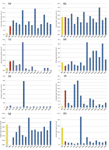
Figure 4: Concentrations (in micrograms) of toxic metals in 1 cup (100 g) of dry cat food (from Table III) compared to EPA RfD and WHO TDI daily intake values for a 10-lb cat. (a) As, (b) Cd, (c) Hg, (d) Ni, (e) Pb, (f) Sb, (g) Tl, (h) U.
The wet cat foods had the lowest concentrations of metal contaminants found in the four types of pet food, as shown in Figure 5. An examination of the amount of each element compared to the calculated limit shows that the net amount of concentration for the serving exceeded the calculated values for eight of the elements examined. As was the trend with the other samples, arsenic levels were higher than the EPA levels in all the wet cat foods but more than half of the cat food arsenic levels fell below the WHO limit. Greater than 60% of the wet pet food had cadmium amounts more than the EPA and WHO limits. Eight of the wet cat food samples had mercury amounts that exceeded the EPA limit and three samples that exceed the WHO calculations. Half of the 14 wet cat food samples had concentrations of thorium that exceeded the EPA limit. Finally, uranium levels over 40 μg were found in two wet cat foods (Cat-27 and Cat-22). The calculated limit for the EPA is 14 μg daily and the WHO limit is 2.7 μg/day.

Figure 5: Concentrations (in micrograms) of toxic metals in 1 can (175 g) of wet cat food (from Table IV) compared to EPA RfD and WHO TDI daily intake values for a 10-lb cat. (a) As, (b) Cd, (c) Hg, (d) Ni, (e) U, (f) Tl.
The metals concentrations for the four types of pet food were calculated against the EPA and WHO limits separately with the assumption that one serving of dry food or one serving of wet food is the sole daily food source for the animal. If the pet owner combines the wet and dry foods during the course of a daily feeding the levels of metal contaminants that were below the EPA and WHO limits could easily be exceeded. In the foods where the amounts of contamination were already in excess of the limit, the combination of food types could dramatically increase exposure.
Price Considerations
It was important to see if there was a difference in the trace metal contaminants based on the cost of the pet food, to see if "gourmet" or "premium" brands contained fewer contaminants than the lower cost "budget" varieties. Tables I–IV include the cost per ounce of each of the pet foods analyzed in the study. Only arsenic appeared to have an extremely small correlation with regard to contamination level and price in the dry dog and cat foods. There did appear to be a somewhat greater amount of arsenic in the more expensive brands of dry cat and dog food, but a much larger sampling of food and price ranges would need to be undertaken for a definitive correlation. No other correlations could be drawn from the data about whether the more expensive foods contained lower metal concentrations. The distribution of metal concentrations did not appear to fall in line with price or the so-called "quality" of ingredients.
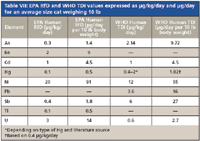
Table VII: EPA RfD and WHO TDI values expressed as μg/kg/day and μg/day for an average size cat weighing 10 lb
Conclusions
The quality control procedures used to produce cat and dog foods are not as thorough as for food that is produced for human consumption. This is particularly true for dry cat and dog food formulas, which might contain as many as a dozen different ingredients such as animal parts, meat by-products, cereals, fillers, nutrients, and essential minerals. And because the FDA does not carry out any rigorous testing of these products, there is the possibility that many of those ingredients will contain trace-metal contaminants. The results show that the vast majority of trace-element contaminant levels in the dog and cat foods are significantly higher than in the canned food samples made for human consumption. It is difficult to say at what stage of production the contamination may have occurred.
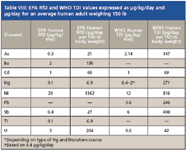
Table VIII: EPA RfD and WHO TDI values expressed as μg/kg/day and μg/day for an average human adult weighing 150 lb
Metals could be derived from the equipment used in the pet food manufacturing process itself or from the source of the different ingredients used in the formula. Trace-metal levels in the cereals and grains used as fillers or used as grains for the livestock in pet food can be impacted by a combination of factors, including the soil conditions where they are grown, whether fertilizers have been used, and environmental pollution from industrial fallout. Additionally, some cat foods contain ingredients derived from seafood products, which are documented as being able to bioaccumulate heavy metals present in aquatic systems. Essential minerals such as calcium and phosphorus are manufactured from industrial chemicals, which could possibly contain other trace-metal impurities. However, the purpose of this study was not to attempt to track down the source of the elements and contamination found in pet food.
The real interest in this study lies with comparing the data with Environmental Protection Agency RfD and World Health Organization TDI values. These are guidelines that are set down by experts in the scientific, medical and health care communities, based on decades of research. The data comparison when the results are calculated to daily exposure levels are probably more cause for concern. The data show that the trace-metal content of many of the different pet foods is significantly higher than EPA and WHO values, when adjusted for the average weight of a dog and cat. We do not know the chemical composition of the heavy metals found in these foods and therefore do not know their uptake, and further we do not know if the EPA RfD and WHO TDI values apply the same to animal physiology. However, this is of particular relevance when the data are compared with the results obtained with the cans of human tuna fish, sardines and chicken (which show heavy metal concentrations at or below EPA and WHO values) and are adjusted for the average weight of a human adult.
Finally, it can be seen from the data that purchasing gourmet or premium brand pet food does not guarantee that your pet will be fed a higher quality product, with regard to its heavy metal content. Superficially it appears that some of the high arsenic concentrations are contained in a few of the more expensive brands but more testing would be required to clarify if this trend is a true correlation. The trace-element data generated in this study have shown that there might be a cause of concern for owners who feed their pets commercially available dog and cat food on a daily basis. However, it should be emphasized that this statement is based on risk assessment guidelines set down by the EPA and WHO, which are generated for the human population and do not necessarily translate into adverse health effects for domesticated pets such as dogs and cats. Additional studies need to be carried out to confirm the findings of this study and in particular to get a better understanding of the origin of the trace-element contamination in the overall production process — from the source of the ingredients to the manufacturing process itself.
P. Atkins is a Product Applications Specialist, L. Ernyei is a Senior ICP Spectroscopist, W. Driscoll is a Senior ICP-MS Spectroscopist, and R. Obenauf is the President, all at SPEX CertiPrep. R. Thomas is a Principal Consultant with Scientific Writing Solutions. The authors can be contacted at crmsales@spexcsp.com.
References
(1) P. Atkins, L. Ernyei, W. Driscoll, R. Obenauf, and R. Thomas, Spectroscopy 26(1), 46–56 (2011).
(2) Environmental Protection Agency Integrated Risk Information System – Chronic Oral Reference Dose Values for Inorganic Contaminants: http://www.epa.gov/iris/index.html
(3) K. Morgareidge, G.E. Cox, and M.A. Gallo, "Chronic Feeding Studies with Beryllium in Dogs," Food and Drug Research Laboratories, Inc. Submitted to the Aluminum Company of America. Alcan Research and Development, Ltd., Kawecki-Berylco Industries, Inc., and Brush-Wellman, Inc. (1976).
(4) World Health Organization (WHO) - Derivation of Health Risk Assessment Guidelines Using Tolerable Daily Intake Approach: http://www.who.int/water_sanitation_health/dwq/2edvol2p2a.pdf
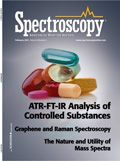
LIBS Illuminates the Hidden Health Risks of Indoor Welding and Soldering
April 23rd 2025A new dual-spectroscopy approach reveals real-time pollution threats in indoor workspaces. Chinese researchers have pioneered the use of laser-induced breakdown spectroscopy (LIBS) and aerosol mass spectrometry to uncover and monitor harmful heavy metal and dust emissions from soldering and welding in real-time. These complementary tools offer a fast, accurate means to evaluate air quality threats in industrial and indoor environments—where people spend most of their time.
NIR Spectroscopy Explored as Sustainable Approach to Detecting Bovine Mastitis
April 23rd 2025A new study published in Applied Food Research demonstrates that near-infrared spectroscopy (NIRS) can effectively detect subclinical bovine mastitis in milk, offering a fast, non-invasive method to guide targeted antibiotic treatment and support sustainable dairy practices.